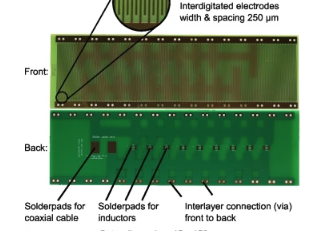Jasper Giesler; Laura Weirauch; Jorg Thoming; Michael Baune
Scientific Reports 35 (2024): 16491
doi: 10.1038/s41598-024-67030-9
Separation and classification are important operations in particle technology, but they are still limited in terms of suspended particles in the micrometer and nanometer size-range. Electrical fields can be beneficial for sorting such particles according to material properties. A mechanism based on strong and inhomogeneous fields is dielectrophoresis (DEP). It can be used to separate microparticles according to their material properties, such as conductivity and permittivity, by selectively trapping one particle type while the other can pass the separator. Conventional DEP separators show either a limitation in throughput or frequency bandwidth. A low throughput limits the economical feasibility in many cases. A lower frequency bandwidth limits the variety of materials that can be sorted by DEP. To separate semiconducting particles from a mixture containing particles with higher conductivity according to their material, high frequencies are required. Possible applications are the separation of semiconducting and metallic carbon nanotubes or the separation of carbon-coated lithium iron phosphate particles from graphite in the recycling process of spent lithium-ion batteries. In this publication, we aim to display how to tune the electrical impedance of a high-throughput DEP separator based on custom-designed printed circuit boards to increase its frequency bandwidth. By adding inductors to the electrical circuit, we were able to increase the frequency bandwidth from 500 kHz to over 11 MHz. The experiments in this study act as proof-of-principle. Furthermore, a non-deterministic way to increase the impedance of the setup is shown, yielding a maximum frequency of 39.16 MHz.
© 2024, The Author(s)


